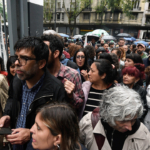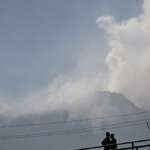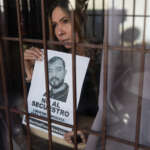A Closer Look at South America
South America Flag
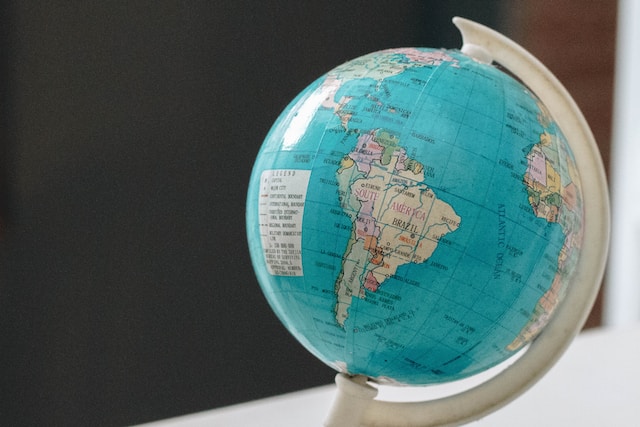
South America Capital Name
- Argentina - Buenos Aires
- Brazil - Brasília
- Bolivia - Sucre
- Chile - Santiago
- Colombia - Bogotá
- Ecuador - Quito
- Guyana - Georgetown
- Paraguay - Asunción
- Peru - Lima
- Uruguay - Montevideo
- Venezuela - Caracas
South America Neighbours
 Argentina
Argentina Bolivia
Bolivia Brazil
Brazil Chile
Chile Colombia
Colombia Ecuador
EcuadorFalkland Islands
 French Guiana
French Guiana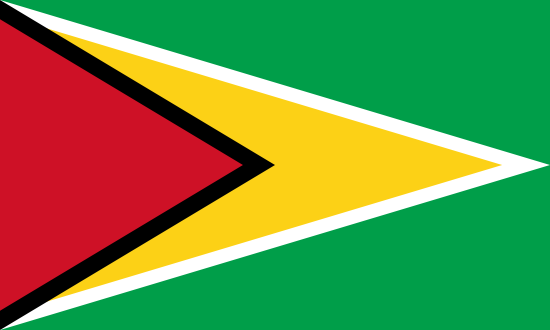 Guyana
Guyana Paraguay
Paraguay Peru
Peru Suriname
Suriname Uruguay
Uruguay Venezuela
Venezuela
Exploring South America
Origin of South America
South America is the fourth largest continent on Earth, measuring 8,543,500 square miles (22,070,000 sq km). It is located primarily in the Southern Hemisphere and is bordered by the Atlantic and Pacific Oceans to the east and west respectively. South America has a long and varied history, with evidence of human occupation dating back to 40,000 years ago. During its early years, it was home to a wide variety of cultures, tribes, and empires, most of which have disappeared or been incorporated into larger entities. The oldest and most widespread culture in South America was that of the Inca Empire, which ruled most of what is now Peru, Bolivia, and parts of Chile and Argentina. Other major empires included the Aztecs in what is now Central America and the Mayan civilization in what is now Guatemala.Culture
The culture of South America is incredibly diverse, with many countries having their own unique customs and traditions. Throughout South America, there are many different ethnicities, languages, and religions. This mix of cultures often creates a dynamic, vibrant society. Music is a major element of South American culture, with a variety of genres from reggaeton and samba to bachata and ranchera. Music is typically used to express the feelings and emotions of the people, as it has been for centuries. Food is another big part of the culture, with each country having its own traditional dishes. In Brazil, Feijoada is a common dish made with black beans and pork, while in Argentina, Asado is a popular dish of grilled beef.Sport
Sports have always been a major part of South American culture. The most popular sport in South America is undoubtedly football. The region has produced many famous footballers over the years, from Edson Arantes do Nascimento (popularly known as Pele) of Brazil to Diego Maradona of Argentina. Football is so popular that when the World Cup is held in South America, it is almost like a national holiday. South America is also passionate about other sports such as basketball, rugby, and volleyball. Each country has its own favourite sports, with some countries having a bigger focus on some more than others.Religion
The predominant religion in South America is Christianity, with around 90% of the population following the Catholic faith. Protestantism is also gaining ground, particularly in the countries of Brazil and Paraguay. Other faiths are also present in smaller numbers in certain countries, such as Judaism in Argentina, Buddhism in Peru, and Hinduism and Islam in Brazil. These other religions typically have their roots in South American immigrants from other parts of the world, such as Europe, Asia, and Africa.Languages
The predominant language in South America is Spanish, although some countries also have other official languages, such as Portuguese in Brazil, English in Guyana, Dutch in Suriname, and French in French Guiana. Other languages are also spoken in South America, such as Guarani in Paraguay, Quechua in Peru, and Aymara in Bolivia. There are also many indigenous languages still spoken, although the number of people speaking these languages is diminishing.Education
Education is highly valued in South America, and all countries are committed to improving the educational outcomes for their citizens. Each country has its own educational system, with varying levels of quality and availability. Generally, children attend primary school from age six to twelve, and then secondary school from age twelve to eighteen. At the tertiary level, each country has public and private universities. University education is typically cheaper than in the United States or Europe, making it more accessible to more people.Demographics
South America has a population of approximately 422 million people, spread across the various countries. Brazil is the most populous country, with 205 million people, followed by Colombia with 49 million people and Argentina with 44 million people. The population of South America is mostly young, with around 31.7% of the population being under the age of 15. The median age of the population is 28.7 years, making it one of the most youthful regions in the world.Commerce
South America has a vibrant and growing economy, with each country having its own characteristics and strengths. The region has a total GDP of $3.7 trillion in 2018, which makes it the fourth-largest economic region in the world. The main industries in South America are manufacturing, minerals and mining, agriculture, and construction. Most countries rely heavily on international trade, and many countries specialize in certain commodities or products such as beef exports from Argentina or oil exports from Venezuela.Weather
The weather in South America is incredibly varied, with each country having its own unique climate. In general, temperatures range from temperate to tropical depending on the location. The northernmost areas of South America tend to be hot and humid, with temperatures reaching upwards of 40°C (104°F). In the temperate regions, such as Argentina, Chile, and Uruguay, temperatures range from around 20-30°C (68-86°F). And in the southernmost regions of the continent, such as Peru and Bolivia, temperatures average around 8-14°C (46-57°F).Borders
South America is bordered by the Atlantic and Pacific Oceans to the east and west respectively. To the north, South America is bordered by Central America and the Caribbean. The borders between countries within South America are largely political in nature, with the most significant border being the one between Brazil and the other South American countries. The Amazon River is an important physical border between Brazil and the other countries.South America Highest Point Name
The highest point in South America is Aconcagua located in Argentina. It is 6,960.8 meters (22,837 feet) above sea level.
South America Official Languages
The official languages of South America vary by country:
- Argentina: Spanish
- Bolivia: Spanish, Quechua, Aymara
- Brazil: Portuguese
- Chile: Spanish
- Colombia: Spanish
- Ecuador: Spanish, Quechua
- Guyana: English
- Paraguay: Spanish, Guaraní
- Peru: Spanish, Quechua
- Suriname: Dutch
- Uruguay: Spanish
- Venezuela: Spanish
South America Ethnic Groups
- Argentina: Mestizo (people of European and Amerindian descent), European, Amerindian, Arab, and African.
- Brazil: European, Pardo (people of mixed European, Amerindian, African, and East Asian descent), Afro-Brazilian, Amerindian, Caboclo (people of mixed European, Amerindian, and African descent), and Asian.
- Peru: Mestizo (people of European and Amerindian descent), European, Amerindian, Afro-Peruvian, Chinese, and Japanese.
- Chile: Mestizo (people of European and Amerindian descent), European, Amerindian, Spanish, Mapuche, and German.
- Ecuador: Mestizo (people of European and Amerindian descent), Amerindian, Afro-Ecuadorean, Spanish, Montubio (people of mixed Amerindian, Spanish, and African descent).
- Colombia: Mestizo (people of European and Amerindian descent), European, Amerindian, Afro-Colombian, Romani, and Middle Eastern.
- Venezuela: Mestizo (people of European and Amerindian descent), European, Amerindian, African, and Chinese.
- Bolivia: Mestizo (people of European and Amerindian descent), European, Amerindian, Afro-Bolivian, and Japanese.
- Uruguay: Mestizo (people of European and Amerindian descent), European, Amerindian, Afro-Uruguayan, and Middle Eastern.
South America Religions
South America is comprised of many different countries with a variety of religious beliefs and practices. In Brazil, the majority of people practice Roman Catholicism. Some parts of Brazil, especially those with large African populations, have syncretic religions such as Candomble and Umbanda. In Bolivia, the majority of people practice Catholicism, but a large portion of the population also follows some form of indigenous religion, mainly related to the worship of Pachamama, the Inka Sun god, along with Christian syncretism. In Argentina, the majority of people practice Roman Catholicism. A sizable minority of the population follows mainline Protestant denominations, and a small fraction of the population is Jewish. In Columbia, Catholicism is the main religion practiced, but Protestant faiths, including Seventh-day Adventism, are also common. Peru is also predominantly Catholic, although a significant portion of the population practices forms of indigenous religions, and there is a small Jewish community in the country as well.
South America Total Area
South America has a total land area of 17,835,252 km2 (6,890,000 sq mi).
South America Land Area
- Argentina: 2,780,400 km2
- Bolivia: 1,098,581 km2
- Brazil: 8,515,767 km2
- Chile: 756,102 km2
- Colombia: 1,141,748 km2
- Ecuador: 283,561 km2
- Guyana: 214,969 km2
- Paraguay: 406,750 km2
- Peru: 1,285,216 km2
- Suriname: 163,820 km2
- Uruguay: 176,220 km2
- Venezuela: 912,050 km2
South America Water Area
Brazil has the highest water area in South America, with an area of 8,491,163 km2 (3,287,657 mi2) of water.
South America Total Population
According to the World Bank, the total population for South America in 2020 is approximately 425,202,208.
South America Currency Name
- Argentina - Argentine Peso
- Bolivia - Bolivian Boliviano
- Brazil - Brazilian Real
- Chile - Chilean Peso
- Colombia - Colombian Peso
- Ecuador - United States Dollar
- Guyana - Guyanese Dollar
- Paraguay - Paraguayan Guarani
- Peru - Peruvian Nuevo Sol
- Suriname - Surinamese Dollar
- Uruguay - Uruguayan Peso
- Venezuela - Venezuelan Bolivar
South America Currency Code
The currency codes for the countries of South America vary depending on the country. Below is a list of some of the most widely used currency codes:
- Argentina - ARS
- Brazil - BRL
- Chile - CLP
- Colombia - COP
- Ecuador - USD
- Peru - PEN
- Venezuela - VES
South America Currency Symbol
The currency symbols for South American countries vary. Some common symbols used are:
- BRL - Brazilian Real
- ARS - Argentine Peso
- CLP - Chilean Peso
- PEN - Peruvian Sol
- EUR - Euro
- COP - Colombian Peso
South America Calling Code
The country codes for South American countries are as follows:
- Argentina: +54
- Bolivia: +591
- Brazil: +55
- Chile: +56
- Colombia: +57
- Ecuador: +593
- Guyana: +592
- Paraguay: +595
- Peru: +51
- Suriname: +597
- Uruguay: +598
- Venezuela: +58
How to Say "South America" In Different Languages?
- Hungarian
- Dél-Amerika (hu-HU)
- Japanese
- 南アメリカ (ja-JP)
- Arabic
- أمريكا الجنوبية (ar-AE)
- Portuguese
- América do Sul (pt-BR)
- Chinese
- 南美洲 (zh-CN)
- Czech
- Jižní Amerika (cs-CZ)
- Danish
- Sydamerika (da-DK)
- French
- Amérique du Sud (fr-FR)
- German
- Südamerika (de-DE)
- Indonesian
- Amerika Selatan (id-ID)
- Hebrew
- דרום אמריקה (he-IL)
- Italian
- America del Sud (it-IT)
- Korean
- 남아메리카 (ko-KR)
- Polish
- Ameryka Południowa (pl-PL)
- Romanian
- America de Sud (ro-RO)
- Russian
- Южная Америка (ru-RU)
- Spanish
- América del Sur (es-ES)
- Dutch
- Zuid-Amerika (nl-NL)
- Turkish
- Güney Amerika (tr-TR)
- Vietnamese
- Nam Mỹ (vi-VN)
South America Popular Holidays
- New Year's Day
- 1 January
- Haiti Independence Day
- 1 January
- Epiphany
- 6 January
- Sao Paulo Independence Day
- 25 January
- Saint Lucia National Day
- 22 February
- Guyana National Day
- 23 February
- Carnival
- 25 February (10 March)
- Dominican Republic Flag Day
- 27 February
- Dominican Republic National Day
- 27 February
- Peace Day
- 1 March
- National Women's Day
- 8 March
- Jou00e3o Pessoa's Day
- 13 March
- Aruba Flag Day
- 18 March
- Emancipation of Slavery
- 20 March
- Rio de Janeiro State's Day
- 2 April
- Good Friday
- 2 April
- Easter Sunday
- 4 April
- Orthodox Easter Sunday
- 24 April
- Labour Day
- 1 May
- Suriname Labour Day
- 5 May
- Paraguay Independence Day
- 14 May
- Uruguay Armed with Force Day
- 18 May
- Ecuador National Day
- 24 May
- Argentina National Day
- 25 May
- Chile Glorious Revolution Day
- 26 May
- Corpad Christi
- 31 May
- Kitchen Fight
- 3 June
- Peru Battle of Arica Day
- 7 June
- Unity Day
- 7 June
- Peru Flag Day
- 7 June
- Bonaire Dag van Bonaire
- 10 June
- Bolivia Flag Day
- 20 June
- Colombia Flag Day
- 20 June
- Argentina Flag Day
- 20 June
- Battle of Carabobo Day
- 24 June
- Battle of Las Queseras del Medio Day
- 24 June
- Venezuela National Day
- 5 July
- Venezuela Declaration of Independence Day
- 5 July
- Saint Martin Emancipation Day
- 10 July
- Peru National Day
- 28 July
- Virgin of Copacabana Day
- 2 August
- Bolivia National Day
- 6 August
- Jamaica National Day
- 6 August
- Day of Prayer and Reflection
- 8 August
- Atlantic Southern Cross Celebration
- 19 August
- Ecuador Independence Day
- 24 August
- Trinidad & Tobago National Day
- 30 August
- Brazil National Day
- 7 September
- Braziliana Independence Day
- 7 September
- El Salvador National Day
- 15 September
- Honduras Independence Day
- 15 September
- Honduras Flag Day
- 15 September
- Costa Rica National Day
- 15 September
- Guatemala National Day
- 15 September
- Chile National Day
- 18 September
- Saint Kitts & Nevis National Day
- 19 September
- Curau00e7ao National Day
- 4 October
- Columbus Day
- 12 October
- Saint Vincent & Grenadine National Day
- 27 October
- Paraguay Flag Day
- 27 October
- All Souls' Day
- 2 November
- Diversity's Day
- 18 November
- Suriname National Day
- 25 November
- Barbados National Day
- 30 November
- Liberty Day
- 8 December
- Republic Day
- 18 December




